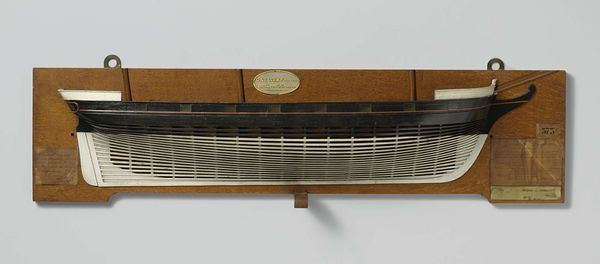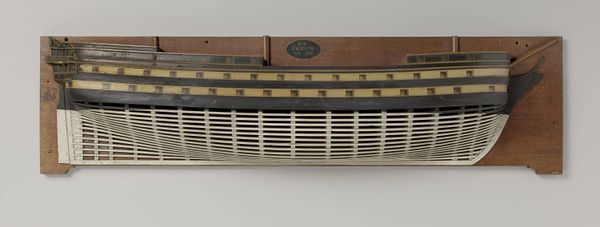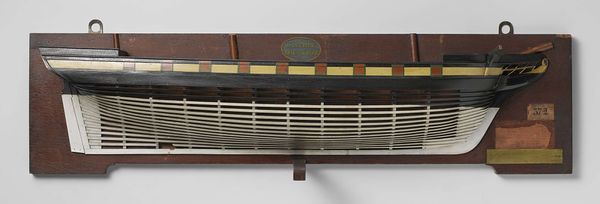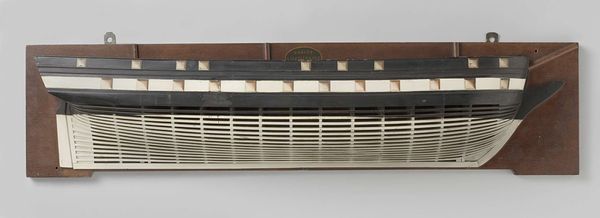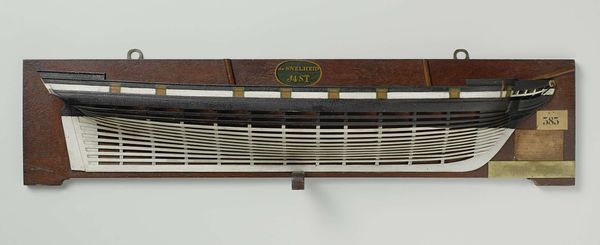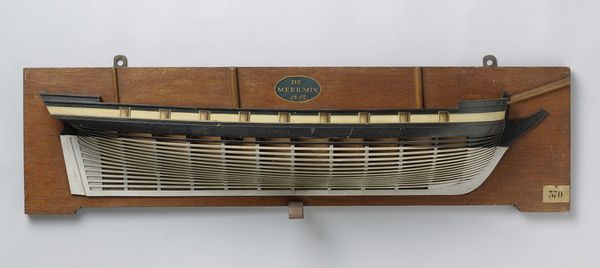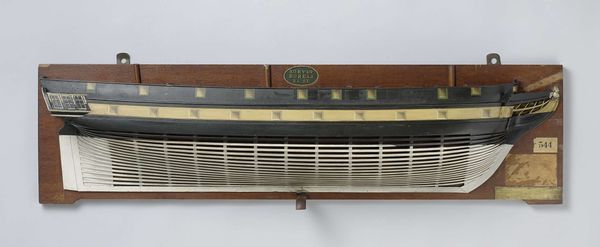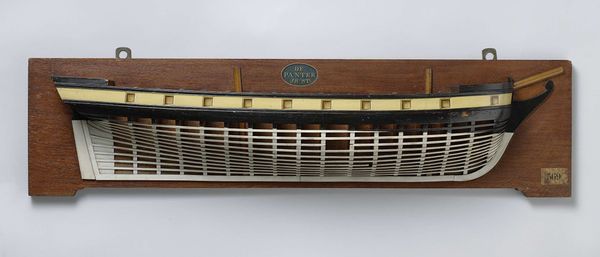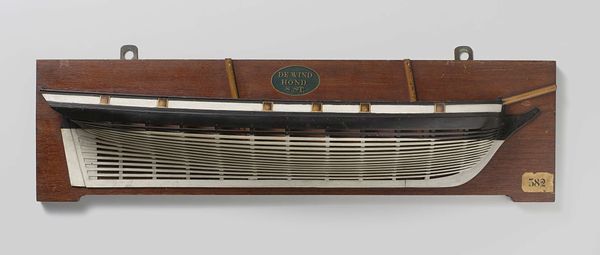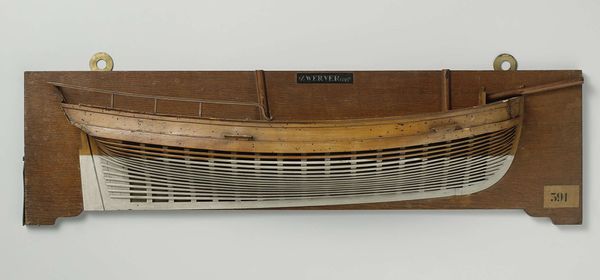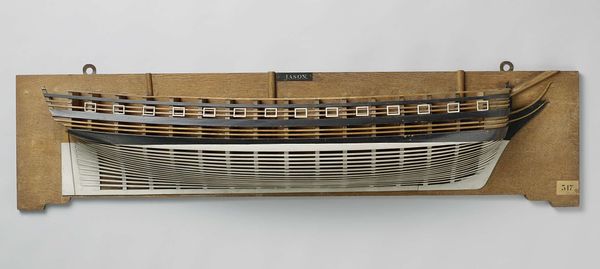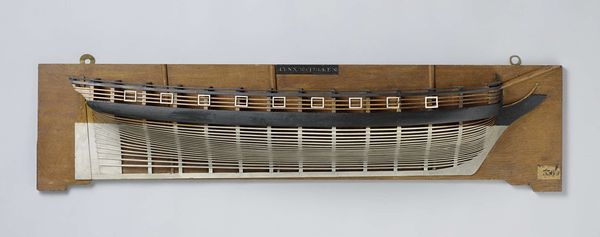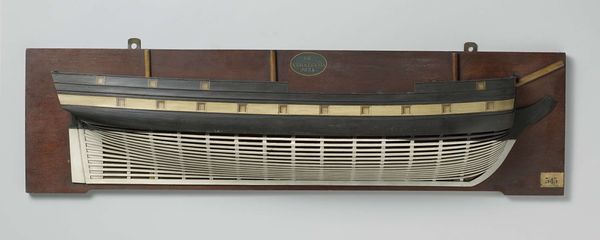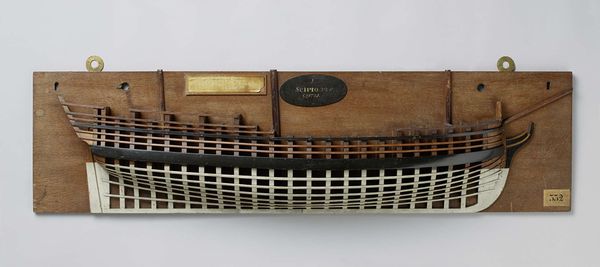
wood
#
wood
#
history-painting
Dimensions: height 36 cm, width 139.1 cm, depth 18.2 cm
Copyright: Rijks Museum: Open Domain
Editor: Here we have a Half Model of a 50-Gun Frigate, made in 1843, by Rijkswerf Vlissingen, out of wood. The meticulous lines really strike me – it's almost abstract. What are your initial thoughts? Curator: What stands out to me is how this seemingly simple model encapsulates complex histories of power, trade, and exploitation. These frigates, beautiful as they are, were tools of empire. They enforced colonial dominance and facilitated the transatlantic slave trade. What does the phrase "50-Gun" trigger in your mind? Editor: It sounds intimidating. The number itself hints at its war-like nature, doesn’t it? How would the ships have factored into the social and political landscape? Curator: Exactly. Think about who built them, who sailed them, and who suffered from their presence. These ships represent a massive investment of resources – resources often extracted from colonized lands. Consider the gendered aspect as well: naval power has historically been associated with masculinity and national pride. How do we unpack this legacy in a contemporary world grappling with social justice? Editor: So, it’s about interrogating the narratives they represent, and the systems they supported? Curator: Precisely. We can appreciate the craftsmanship while also acknowledging the ethical implications of the ship's purpose, challenging any romantic notions associated with it. Editor: I see it differently now; the model becomes a symbol ripe with tensions. Curator: Right. The frigate isn't merely an object; it is a prompt for a vital dialogue, linking a Dutch shipyard to global histories of inequality. Editor: That adds so many layers, making it impossible to see it just as a beautiful object. Thanks, this was helpful!
Comments
No comments
Be the first to comment and join the conversation on the ultimate creative platform.
